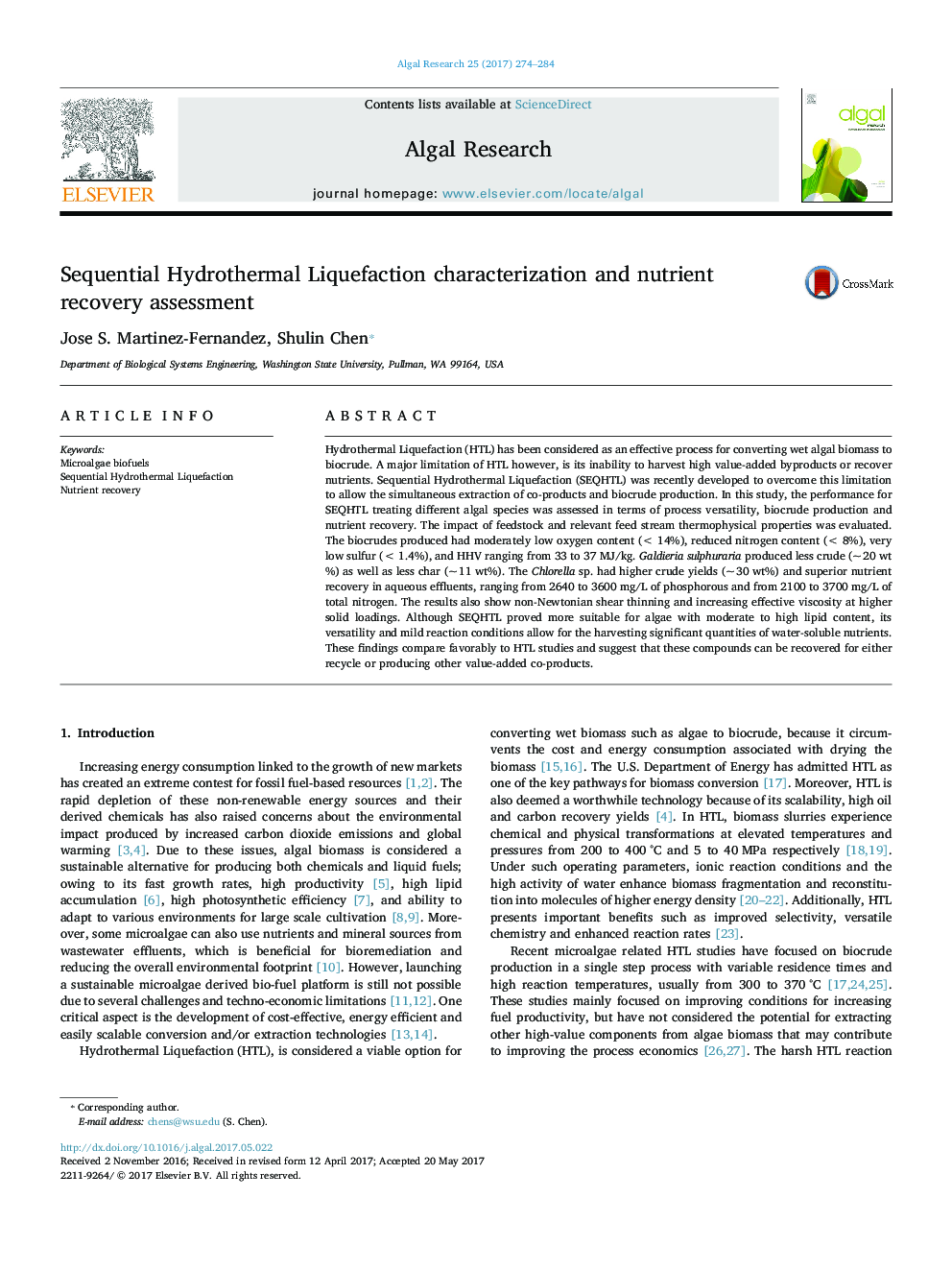| Article ID | Journal | Published Year | Pages | File Type |
|---|---|---|---|---|
| 5478382 | Algal Research | 2017 | 11 Pages |
Abstract
Hydrothermal Liquefaction (HTL) has been considered as an effective process for converting wet algal biomass to biocrude. A major limitation of HTL however, is its inability to harvest high value-added byproducts or recover nutrients. Sequential Hydrothermal Liquefaction (SEQHTL) was recently developed to overcome this limitation to allow the simultaneous extraction of co-products and biocrude production. In this study, the performance for SEQHTL treating different algal species was assessed in terms of process versatility, biocrude production and nutrient recovery. The impact of feedstock and relevant feed stream thermophysical properties was evaluated. The biocrudes produced had moderately low oxygen content (<Â 14%), reduced nitrogen content (<Â 8%), very low sulfur (<Â 1.4%), and HHV ranging from 33 to 37Â MJ/kg. Galdieria sulphuraria produced less crude (~Â 20Â wt%) as well as less char (~Â 11Â wt%). The Chlorella sp. had higher crude yields (~Â 30Â wt%) and superior nutrient recovery in aqueous effluents, ranging from 2640 to 3600Â mg/L of phosphorous and from 2100 to 3700Â mg/L of total nitrogen. The results also show non-Newtonian shear thinning and increasing effective viscosity at higher solid loadings. Although SEQHTL proved more suitable for algae with moderate to high lipid content, its versatility and mild reaction conditions allow for the harvesting significant quantities of water-soluble nutrients. These findings compare favorably to HTL studies and suggest that these compounds can be recovered for either recycle or producing other value-added co-products.
Keywords
Related Topics
Physical Sciences and Engineering
Energy
Renewable Energy, Sustainability and the Environment
Authors
Jose S. Martinez-Fernandez, Shulin Chen,
